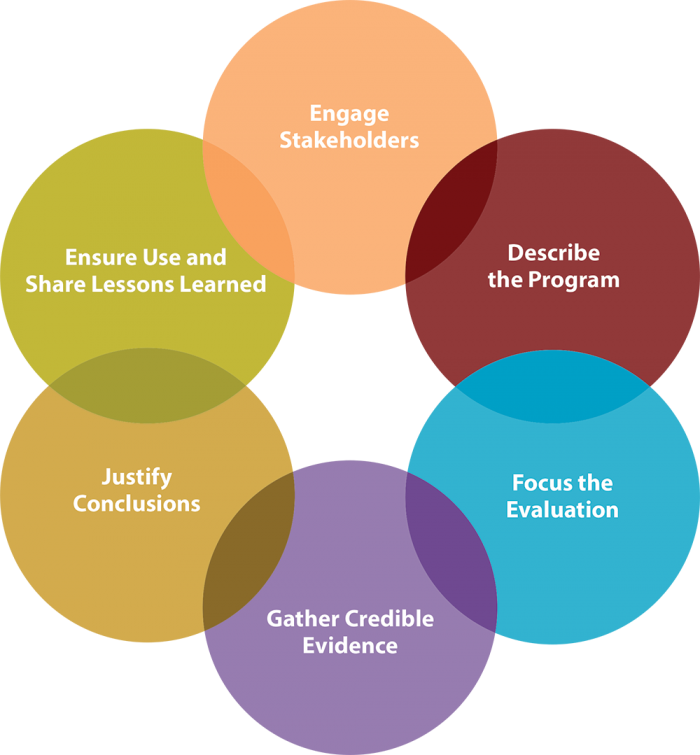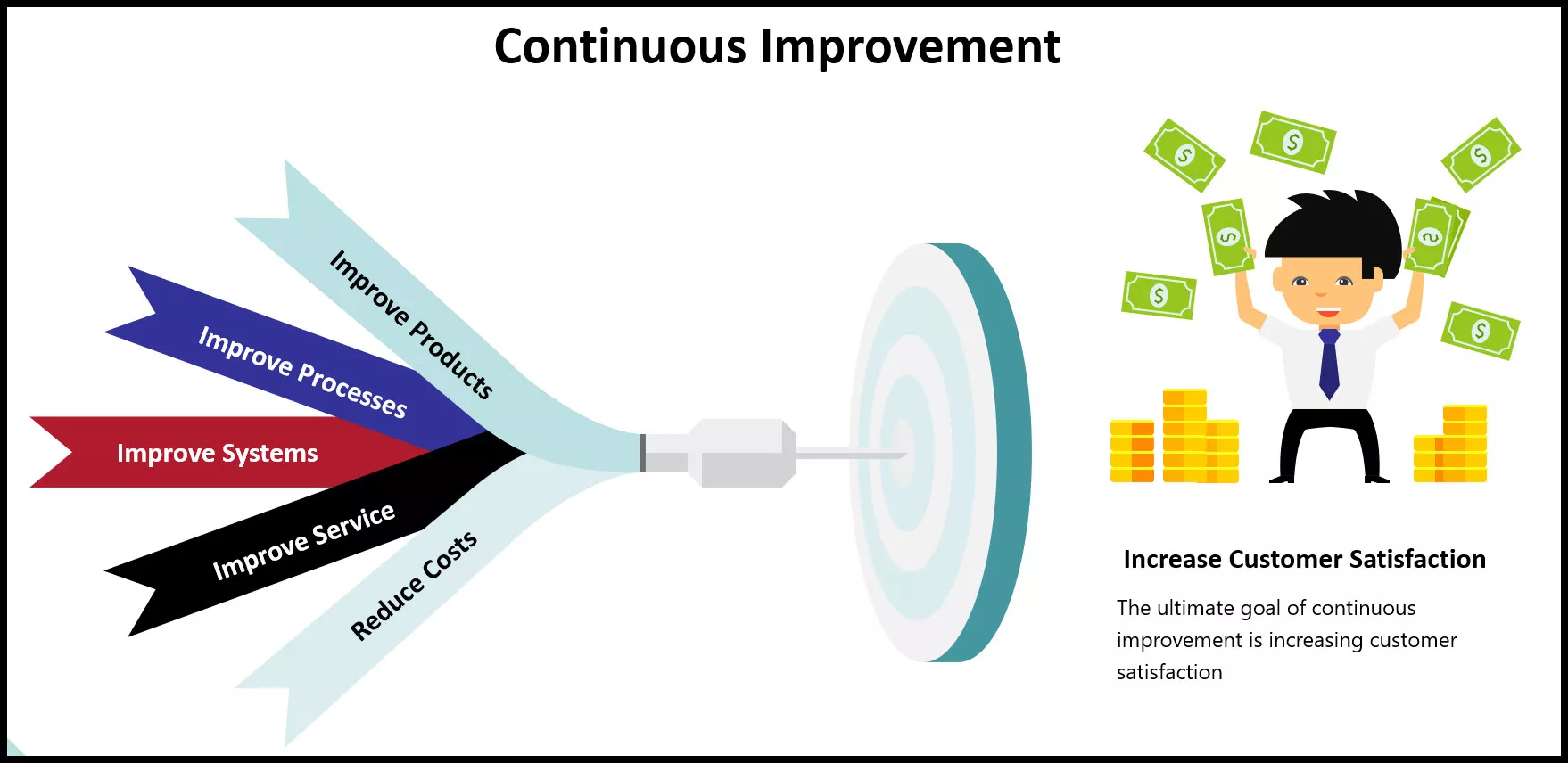Image: https://www.rcplearning.com/ways-to-measure-training-effectiveness/
Introduction:
Training and development initiatives play a critical role in enhancing the knowledge, skills, and performance of employees in organizations. However, it's not enough to simply implement training programs; it's equally essential to measure and evaluate their effectiveness to ensure that they are delivering the desired outcomes. In this article, we will discuss the importance of measuring and evaluating the effectiveness of training and development initiatives, share best practices for evaluating the impact of training programs, including Kirkpatrick's model of evaluation, surveys, assessments, and other methods for collecting feedback and measuring outcomes, and highlight the importance of using evaluation results to continuously improve training and development initiatives.
Importance of Measuring and Evaluating Training Effectiveness
Measuring and evaluating the effectiveness of training and development initiatives is crucial for several reasons:
Accountability: Organizations invest significant resources in training and development programs, and it's important to hold them accountable for their impact. Measuring and evaluating training effectiveness provides evidence of the return on investment (ROI) and helps organizations demonstrate the value and impact of their training initiatives to stakeholders, including leadership, employees, and shareholders (Phillips, 2016).
Continuous improvement: Evaluation results provide insights into the strengths and weaknesses of training programs, allowing organizations to identify areas for improvement. By continuously evaluating training effectiveness, organizations can make data-driven decisions to enhance the quality and relevance of their training initiatives, leading to continuous improvement in employee performance and organizational outcomes (Kraiger, 2017).
Decision-making: Evaluation results provide organizations with data and evidence to make informed decisions about their training and development strategies. Organizations can use evaluation findings to identify which training programs are most effective, where resources should be allocated, and what changes need to be made to align training initiatives with organizational goals and objectives (Phillips, 2016).
Employee engagement: Evaluating training effectiveness shows employees that their learning and development are valued by the organization. When employees see that their feedback is collected and used to improve training programs, it fosters a sense of ownership and engagement, leading to higher levels of motivation and commitment towards their own development (Goldstein, 2002).
Best Practices for Evaluating Training Programs
Image: https://www.ncsddc.org/resource/std-program-evaluation-tools-trainings/
Kirkpatrick's model of evaluation: Kirkpatrick's model is a widely recognized and widely used framework for evaluating training effectiveness. It consists of four levels of evaluation (Kirkpatrick, 2019):
Video: https://youtu.be/aw9sqEvfuf8
Image: https://www.aihr.com/blog/measuring-training-effectiveness/
Level 1: Reaction: Collect feedback from participants about their satisfaction and perceptions of the training program.
Level 2: Learning: Assess the extent to which participants have acquired the intended knowledge, skills, and competencies from the training program.
Level 3: Behaviour: Measure the transfer of learning to the workplace by assessing changes in behaviour and performance.
Level 4: Results: Evaluate the impact of training on organizational outcomes, such as productivity, quality, and customer satisfaction.
Using Kirkpatrick's model, organizations can collect data at each level to assess the effectiveness of their training programs and make data-driven decisions for improvement.
Surveys and assessments: Surveys and assessments can be valuable tools for collecting feedback and measuring outcomes of training programs. Pre- and post-training surveys can assess participants' knowledge, skills, and perceptions, while assessments and quizzes can measure learning outcomes. Surveys and assessments can be administered through online platforms, in-person interviews, or paper-based methods, depending on the organization's resources and requirements.
Observations and feedback from supervisors or peers: Observations and feedback from supervisors or peers can provide valuable insights into the transfer of learning to the workplace. Observations can be done through job shadowing, on-the-job assessments, or performance reviews where supervisors or peers can provide feedback on employees' performance and behaviour changes after the training. This qualitative data can complement quantitative data from surveys and assessments, providing a holistic view of the training effectiveness.
Post-training application tasks: Another effective method for evaluating training effectiveness is to assign post-training application tasks to participants. These tasks can be real-world assignments or simulations that allow participants to apply the knowledge and skills learned from the training in their job tasks. By evaluating the quality and effectiveness of participants' application tasks, organizations can assess the transfer of learning to the workplace and measure the impact of the training on job performance.
Importance of Using Evaluation Results for Continuous Improvement
Image: https://www.quality-assurance-solutions.com/what-Is-continuous-improvement.html
Evaluating training effectiveness is not a one-time event, but a continuous process that involves using evaluation results to improve training and development initiatives. Here are some reasons why using evaluation results for continuous improvement is vital:
1. Identifying areas for improvement:
Evaluation results can reveal areas where training programs may be falling short, such as outdated content, ineffective delivery methods, or lack of engagement. By analyzing evaluation findings, organizations can identify these areas for improvement and make necessary adjustments to enhance the effectiveness of their training initiatives.
2. Enhancing training content and delivery:
Evaluation results can provide insights into the relevance and effectiveness of training content and delivery methods. Organizations can use this feedback to update training materials, incorporate new technologies, and adjust the delivery methods to better align with participants' needs and preferences. This continuous improvement process ensures that training programs remain current, engaging, and effective in addressing employees' learning needs.
3. Allocating resources effectively:
Evaluation results can help organizations determine the allocation of resources for training initiatives. By identifying the most effective training programs through evaluation, organizations can prioritize and allocate resources to those programs that have the highest impact on employee performance and organizational outcomes. This strategic allocation of resources ensures that the organization's training investments are optimized and aligned with its overall goals and objectives.
4. Demonstrating organizational commitment to employee development:
Using evaluation results to continuously improve training and development initiatives sends a strong message to employees that their learning and development are valued by the organization. This fosters a culture of continuous learning and improvement, leading to increased employee engagement, motivation, and retention.
Conclusion
Measuring and evaluating the effectiveness of training and development initiatives is essential for organizations to ensure that their training investments are delivering the desired outcomes. Using methods such as Kirkpatrick's model of evaluation, surveys, assessments, observations, and feedback from supervisors or peers, organizations can collect data to assess the impact of training programs on employees' knowledge, skills, behaviour, and organizational outcomes. Moreover, using evaluation results for continuous improvement allows organizations to enhance the quality and relevance of their training initiatives, allocate resources effectively, and demonstrate their commitment to employee development. By following best practices for evaluating training programs and using evaluation results for continuous improvement, organizations can ensure that their training and development initiatives have a maximum impact on employee performance and organizational success.
References
Goldstein, I. L. &. F. K., 2002. Training in Organizations: Needs Assessment, Development, and Evaluation.
Kirkpatrick, D. L. &. K. J. D., 2019. Kirkpatrick's Four Levels of Training Evaluation.
Kraiger, K., 2017. Creating, Implementing, and Managing Effective Training and Development: State-of-the-Art Lessons for Practice.
Phillips, J. J., 2016. Measuring the Success of Learning through Technology: A Guide for Measuring Impact and Calculating ROI on E-Learning, Blended Learning, and Mobile Learning.





Good piece of writing Prasad. Kirkpatrick's model of evaluation is a widely recognised framework for evaluating the effectiveness of training and development programs (Kirkpatrick, 2019). The model consists of four levels: Level 1 - Reaction, Level 2 - Learning, Level 3 - Behavior, and Level 4 - Results. The model suggests that evaluations should not only focus on participants' reaction to the training (Level 1), but also assess the extent to which participants have acquired new knowledge and skills (Level 2), whether they have applied the learning in their job behaviors (Level 3), and ultimately, whether the training has had a positive impact on organisational results (Level 4) (Kirkpatrick, 2019). Kirkpatrick's model is widely used in the field of training and development to guide the evaluation process and measure the effectiveness of training interventions (Noe, 2017).
ReplyDeleteThank you for your valuable input Lasni. Kirkpatrick's model has been a cornerstone in the field of training evaluation for decades, providing a comprehensive framework for assessing training effectiveness. Even though I haven't discussed in the article , it's worth noting that there are some criticisms and limitations to this model.
DeleteOne critique is that Kirkpatrick's model tends to focus more on the quantitative aspects of training evaluation, such as knowledge and behavior outcomes, and may not fully capture the qualitative and long-term impacts of training programs (Alliger, Tannenbaum, Bennett, & Traver, 1997). Additionally, some argue that the model may not be applicable to all types of training programs, as it was originally developed for evaluating traditional, classroom-style training and may not fully address the complexities of modern workplace learning, such as e-learning, on-the-job training, or blended learning approaches (Holton, 2005).
Furthermore, Kirkpatrick's model has been criticized for its lack of emphasis on contextual factors, such as organizational culture, leadership support, and learner characteristics, which can significantly influence training outcomes (Ruona & Gilley, 2009). Additionally, the model may not fully capture the diverse needs and experiences of different learner groups, such as marginalized or underrepresented populations, in the evaluation process (Breaugh, 2008).
In conclusion, while Kirkpatrick's model has been widely used and recognized in the field of training evaluation, it's important to acknowledge its limitations and consider a holistic approach that incorporates qualitative, contextual, and inclusive perspectives in evaluating the effectiveness of training and development programs.
This blog article emphasises the significance of evaluating the efficacy of training and development efforts and leveraging the evaluation outcomes to drive continual improvement. It discusses Kirkpatrick's evaluation model, surveys, assessments, observations, and post-training application activities as techniques for gathering input and monitoring outcomes.
ReplyDeleteWhat is your opinion on how frequently organisations should assess the effectiveness of their training and development initiatives?
Thank you Niluka for your valuable comment. To address your question, the frequency of assessing the effectiveness of training and development initiatives may depend on the organization's goals, industry, and workforce. Some organizations may need more frequent assessments due to rapidly changing business environments or the need for employees to keep up with new technologies or processes. In contrast, other organizations may not need as frequent assessments as their workforce may have more stable skill requirements. It is crucial for organizations to strike a balance between evaluation frequency and employee morale, use appropriate evaluation methodologies, and consider the feedback obtained to drive continual improvement.
DeleteWell penned.
ReplyDeleteIn addition to Kirkpatrick's Four-Level Training Evaluation Model, there are few other method to measure and evaluate the effectiveness of training. The Return on Investment (ROI) method calculates the effectiveness by dividing the monetary benefits by the total cost of the training program. (Phillips, J. J., & Phillips, P. P. (2002). Pre- and post-training assessments and observations and feedbacks can also be used.
Thank you Kabilashini for your response. Indeed, the Return on Investment (ROI) method is another effective way to measure the effectiveness of training and development initiatives. This method can help organizations determine the monetary benefits derived from training compared to the total cost of the training program. It provides a clear picture of the financial returns on investment made in training programs. Additionally, pre- and post-training assessments, observations, and feedback can help evaluate the effectiveness of training programs by measuring the improvement in skills, knowledge, and performance of employees. It is essential to use a combination of evaluation methods to gather accurate and comprehensive feedback and improve the effectiveness of training programs continually.
DeleteInteresting article! I believe the Kirk Patrick model is quite flexible and relevant as a measuring tool. However, do you think that it has any limitations and can be expanded further?
ReplyDeleteThank you for your response. The Kirkpatrick model is an effective tool for measuring the effectiveness of training programs. However, like any other model, it has limitations and can be expanded further to meet the evolving needs of organizations. One limitation of the Kirkpatrick model is that it primarily focuses on the evaluation of the training program itself and does not consider external factors that may influence employee performance. Additionally, it only assesses the immediate reaction, learning, behavior change, and impact of the training program and may not provide a comprehensive evaluation of the long-term effects.
DeleteTo overcome these limitations, organizations can expand the Kirkpatrick model by incorporating additional evaluation levels or combining it with other evaluation models. For instance, organizations can add a fifth level to evaluate the sustainability of the training program's impact over time. Moreover, organizations can combine the Kirkpatrick model with the Phillips ROI model to measure the financial impact of the training program. Additionally, incorporating employee feedback and suggestions can provide valuable insights into the training program's effectiveness and identify areas for improvement.
Hello Prasad, Measuring and evaluating training and development programs is a very good topic. You have mentioned very well about employee training and development from Kirkpatrick's evaluation model and survey evaluations that you have obtained above. Also, as you mentioned above, I am also of the opinion that training and development initiatives have the greatest impact on employee performance and organizational success.
ReplyDeleteThank you for your response Sineth. I am glad that you found the topic of measuring and evaluating training and development programs interesting. Indeed, employee training and development programs play a critical role in enhancing employee performance and organizational success. The Kirkpatrick model and survey evaluations are effective tools for evaluating the effectiveness of training programs and identifying areas for improvement. By continually evaluating and improving training programs, organizations can enhance employee skills, knowledge, and performance, leading to improved productivity and profitability. It is crucial for organizations to invest in employee training and development programs and continually evaluate their effectiveness to stay competitive in today's rapidly changing business environment.
DeleteWell-defined article on Measuring and Evaluating Training Effectiveness: Ensuring Maximum Impact for Training and Development Initiatives. Donald L. Kirkpatrick published the first paper on measuring training efficiency in the US Development and Training Journal in 1959. This significant model includes four levels or aspects of training, including the degree of satisfaction with training activities, evaluation of the impact of training in terms of progress in skills, knowledge, and attitudes, observed changes in performance after the training, and evaluation of business results. Examining the last factor—increasing productivity, sales, and cutting costs—which demonstrates whether the training achieved its intended goal, is said to be of utmost importance. The modified Kirkpatrick framework has been the subject of numerous investigations. (Urbancova et.al, 2021)
ReplyDeleteCertainly! The Kirkpatrick model has indeed undergone modifications over the years and has been widely researched and discussed. Brinkerhoff's Success Case Method, for instance, involves identifying the most successful cases of training and evaluating them to see how the training contributed to their success. (Brinkerhoff, 2005) Meanwhile, the Phillips ROI model focuses on calculating the return on investment of training programs, measuring the monetary benefits against the costs of training. (Phillips, 1991) Employers must assess their training goals and employ the most appropriate evaluation strategy to evaluate training effectiveness. Through evaluation, businesses may not only monitor the success of their training programs but also enhance them for the betterment of employee performance and organizational success.
DeleteOrganizations have explained how effective their training and development initiatives are and how they are achieving it. Emphasizes the importance of evaluating effectiveness and highlighting evaluation results for continuous improvement through employee training and development profiles. Various survey, assessment, observation and post-training application activities are well presented with functions of collecting inputs and monitoring results.
ReplyDeleteThank you for your insightful comment on the importance of evaluating the effectiveness of training and development initiatives. It's true that organizations need to collect data and analyze the results to continuously improve their training programs. This evaluation process can include various methods, such as surveys, assessments, observations, and post-training application activities. By monitoring the results of these activities, organizations can gain valuable insights into the effectiveness of their training programs and identify areas for improvement. Additionally, sharing the evaluation results with employees can help to build trust and encourage participation in future training and development initiatives.
Delete